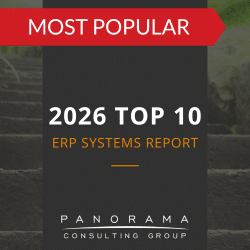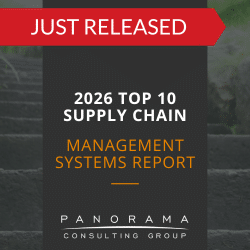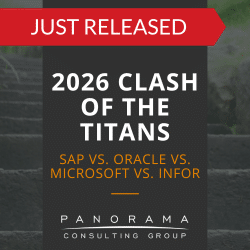Enterprise software doesn’t last forever.
Over time, systems become outdated, incompatible, and misaligned with business needs. In other words, they become legacy systems.
Many organizations are rushing to replace their legacy systems, and this is often a smart decision, but not without the right approach. Today, we’re talking about how to develop a legacy system replacement strategy that considers not just the “how” but the “why.”
Consider the ROI of Replacing vs. Maintaining
In many cases, legacy system modernization is a smart move. However, there are reasons to hold onto your legacy systems and maintain them instead of replacing them completely. Here are some considerations when making this decision.
1. Associated Costs
One of your top considerations should be the expenses associated with upgrading to new technologies. While modernizing your legacy systems can be a beneficial investment, it isn’t always a smart one.
This is especially true if the systems you currently have in place are cost-effective and performing well. If you’re only eyeing new tech because your competitors are, this isn’t enough to justify the financial burden that a legacy system replacement will cost, and you could end up with an ERP failure on your hands.
Only move forward if you know for sure that the future business value you’ll achieve outweighs the costs.
Software Selection & Process Improvement Case Study
In helping the client get its project back on track, one of our primary focus areas was decreasing their customization needs by improving their processes to align with the system's best practices.
2. System Reliability
You don’t want to stick with a legacy system simply because it’s comfortable and your employees know how to use it. However, if your existing systems have proven to be reliable, cost-efficient, and are up to the task of managing your ongoing business requirements, there may not be a need to overhaul them.
3. Application Integration
Are your existing systems seamlessly integrated with the rest of the application architecture at your business? Are you driving specific business functions and interfacing with other apps that support your enterprise?
If this describes your company and you have all the supporting business processes in place, it might make more sense to maintain your existing systems.
If you do decide to move forward with a replacement or legacy system migration, make sure the solutions you select will interface with the business elements you already have in place.
Know When to Modernize
Above, we listed a few of the reasons why businesses may choose to delay or cancel modernization and keep their existing legacy systems in place.
However, there are some key signs that tell you it’s time to upgrade. The signs are often issues that have arisen from your legacy applications and their limitations. They include:
- Misaligned business fit
- Low business value
- Lack of agility
- Complex technology
- High total cost of ownership
- Security risks
Let’s break these down a little more.
1. Misaligned Business Fit
Has your business shifted focus since you first implemented your legacy system? For instance, have you embraced a digital business model where you’re now automating many functions that were once manual?
If so, then your older systems might not fit your new business vision. It may be time to modernize them to make sure they align.
2. Low Business Value
When you’re forced to work with outdated systems that don’t support your needs, the inherent business value is low. When costs exceed benefits, it’s time to upgrade so you can even out the balance.
3. Lack of Agility
By nature, digital businesses are fast-paced. There’s a good chance that your legacy systems lack the agility required to keep pace with your new business model. When this happens, you risk opening your infrastructure up to multiple liabilities, from security concerns to customer frustration.
4. Complex Technology
Has your legacy system technology been too complex for your users since the very beginning? If so, it may be time to finally switch it out for something more user-friendly. User adoption can lag when the system isn’t easy to use.
5. High Total Cost of Ownership
The total cost of ownership (TCO) includes all of the direct and indirect costs that your company incurs as a result of a particular investment. In addition to the initial hardware or software acquisition, it can include:
- Management
- Maintenance
- Data migration
- Support
- User licenses
- Customization
- Organizational change management
- Disaster recovery
- Training
- Opportunity costs associated with downtime
If your project team determines that the TCO of your legacy software is too high, it may be time to upgrade to a more cost-conscious solution.
For example, a modern enterprise resource planning (ERP) platform can do the work of multiple systems. This includes accounting, project management, and more. By implementing a centralized ERP system, you can eliminate many costs, which lowers the overall TCO of the solution.
6. Security Risks
It may be time to replace or upgrade your legacy systems if your current ones are so old that they’ve become vulnerable to data breaches and other risks. Any time a solution forces you to compromise security, compliance, scalability, or support, it’s time to make a change.
Optimize Your Legacy System Replacement Strategy
Upgrading your legacy systems can be a smart business decision. Modern solutions, such as eCommerce systems, supply chain systems, and manufacturing software systems, can help you unlock efficiencies and empower your team members.
However, this move isn’t right for all companies. As you consider your legacy system replacement strategy, think carefully about the tools you already have in place. You may find that it makes better business sense to maintain them while improving your business processes.
Looking for advice as you navigate this process? Our ERP system consultants can help, so contact us below for a free consultation.













